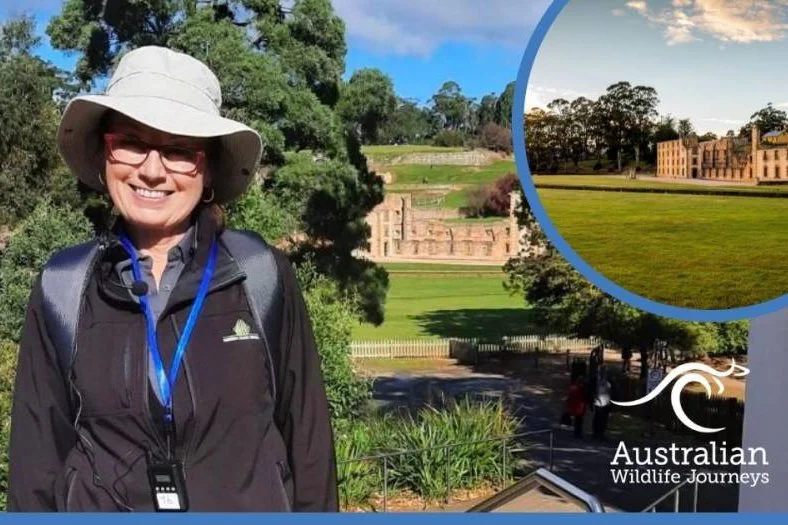Reliving Tasmania’s Convict History with Jennifer Collins
Tasmania’s convict history trail is full of fascinating sites to explore, ranging from the well-known to some that many people have not heard of. “Convict labour was used to build new colonies to expand the economic, military and political influence of Britain around the world,” Jennifer Collins, one of Premier Travel Tasmania’s history-loving guides, explains. “The transportation of 75,000 convicts in the 50 years from 1804 provided a steady labour force to establish this colony of Van Diemen’s Land.”
The Port Arthur penal settlement is Tasmania’s most-visited convict sight, and Jennifer explains that this was where the worst criminals were housed. “In saying that, a lot of them were sent down from Sydney for repeat offences. There were also political prisoners, such as Irish rebels, Americans captured before the War of Independence of 1783, and also Canadians as a result of their failed attempts ousting the British,” she says.
“When I show guests around the settlement, I talk about the backgrounds of some of the convicts and how they reformed, cover some of the industries they worked in, and describe what activities took place day-to-day.”
Jennifer explains that 75 percent of the convicts who were transported to Tasmania were convicted of petty crimes, and that many of
those convicts did not end up completing their full sentences. “The assignment system was a better alternative to prisons, as it provided free labour to new settlers and relieved the government of the burden of prisoner upkeep,” she explains.'
Interestingly, much of the beautiful sandstone seen around Hobart’s streets is a result of hard convict work. “From 1804 convict labour was used to create the settlement of Hobart, and that infrastructure, built with sandstone, is evident with roads, bridges, retaining walls, water supply works and public buildings,” Jennifer says. “Other towns visited with Premier Travel Tasmania, such as Richmond and Ross, have too retained their charm with a predominance of sandstone construction.”






